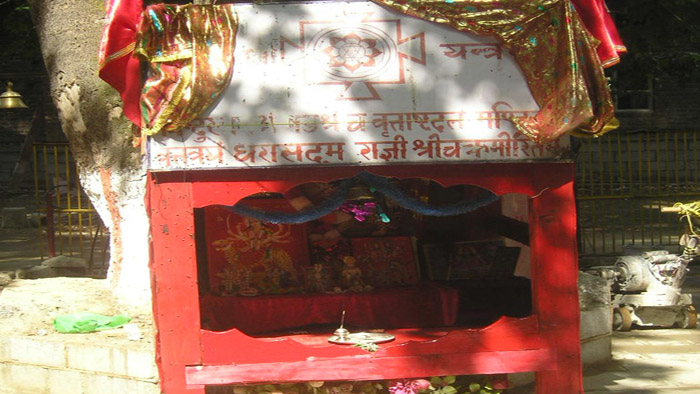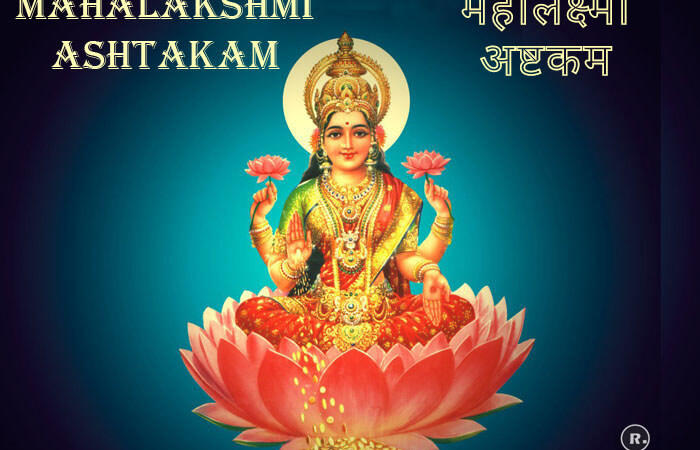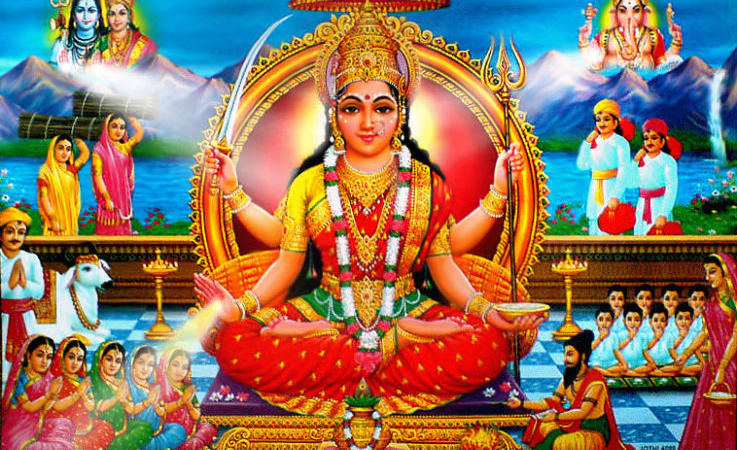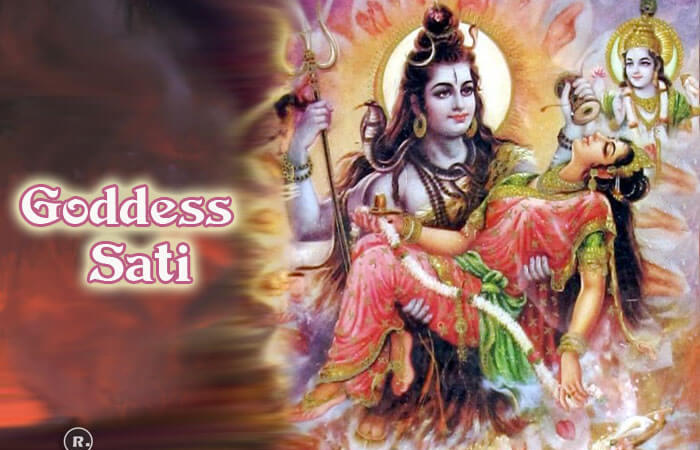Local Gods and Temples

The countryside has many more local gods and goddesses. Each village has its own goddess or Gramadevata, often in the form of an idol worshipped under a sacred tree. Goddesses were also worshipped as protectors against diseases. Shitala (the Cool) also called Mariyammai in the Tamil countryside, was prayed to by the mothers to protect their children against smallpox.
Snake goddess Manasa protected from snakebites. Naga, a snake-spirit, guarded the underground city of Bhagovatiand guarded great treasures. They can take human form and many ancient tribes claim to be descendants of Nagas, especially from a union between human heroes and a feminine form of the snake called Nagini. Assam even today has tribes that are called Nagas.
Yakshas were similar to fairies, who generally were friendly to humans especially to men. Gandharvas were male fairies that were seen as heavenly musicians. Some are depicted with the human head and the body of horses called Kinaras and resembled the Greek centaurs. Apsaras were temptresses of ascetics. Menaka seduced sage Vishvamitra and conceived Shakuntala, the heroine of Kalidasa’s famous drama.
Urvasiwas another legendary Apsara beauty. Vidhyadharas are heavenly magicians, residing in the Himalayan magic cities, able to transform themselves at will and also fly through the air. Rishis and Siddhas attained holy status because they were ascetics and composers of the hymns of the Vedas. Some of the famous Rishis are Vashishta, Vishvamitra, Brhaspati, Kashyapa, Agastya, and Narada, the inventor of the musical instrument veena.
The evil spirits were the Asuras or demons (Suras were the gods) that constantly fought the gods in heaven. Rakshasas were more of a menace to people on earth. The most famous Rakshasa was Ravana, the ten-headed demon king of Lanka, who died in the hands of Rama. Less terrible were the Pishachas, who also roamed the battlefields and burial grounds at night and distressed men. Betala (Vetala) or the vampire took up its abode in corpses and roamed the charnel grounds. Finally, there were the Pretas and Bhutas, naked spirits of dead people, especially those who died an unnatural death. These were very dangerous to their surviving relatives.
Animal and Inanimate Gods
Animals and plants also have attained sacred status. A cow is the most sacred animal, as it is believed to be one of the treasures churned from the cosmic ocean by the gods. The five products of the cow (Panchkavya) namely, milk, curd, butter, urine, and dung are believed to have great purifying potency when mixed in a single mixture.
Kamadhenu was a mythological cow said to have belonged to Vashishta that could satisfy all desires of mankind. Nandi, the bull is the mount of Shiva and is seen in most Shiva temples. Snake is also sacred and the legendary serpents Shesha, and Vasuki are symbols of both death and fertility. Shesha also is seen as a bed for the recumbent Vishnu while Vasuki was used as a rope used in the churning of the cosmic ocean.
Monkey, though not mentioned in the Hindu sacred texts, later is revered perhaps because of Hanuman, Rama’s faithful servant. Hanuman is one of the most popular gods of Hinduism today. He is the son of Vayu, born with the powers and blessings of Shiva. He played a vital role in the Ramayana, assisting Rama in finding Sita and fighting on his behalf with the demons of Ravana. He has the features of a monkey, with a strong human body and heart of gold.
Villages also had sacred trees. Pippala or Ashvata (Ficus religiosa) were especially sacred and the sanctity of these later spread to Buddhism. Vata or nyagrodha, the banyan tree (Ficus indica) has also attained religious status. Women pray to the Ashoka tree for blessings in order to conceive children. The legendary Kalpa-vrikshawas a tree that fulfilled all wishes.
A plant called Tulsi is grown in the courtyard and tended with great care by women and is believed to be sacred to Vishnu. There are two types of grass Kusha and Darbha that are sacred from the Vedic time onwards. However, the Soma plant from that period was forgotten. Another inanimate object that attained holy status is the Salagrama (a fossilized shellfish), which is recognized as one of the symbols of Vishnu. Symbols representing Om, Swastika, and Mandalawere considered having cosmic and magical powers.
Rivers such as Saraswathi, Ganga, Yamuna, Narmada, Kshipra, Brahmaputra, Godavari, Krishna, and Kavery are considered sacred and worshipped on auspicious occasions. It is also customary for people to take a dip in these rives and make offerings to gods and ancestors using the river water either standing in the river or on the banks of such rivers.
Many Hindu temples are located on the hilltops and in the mountain ranges. Most well known among them are the Tirumala hills, Arunacala Hill, Chamundi Hill, Mount Kailash, etc. People worship them either by making a parikrama (circumambulation) around them, offering prayers to their presiding deities or by visiting the temples located on them
Local deities may begin to attract the attention of worshipers from a wide geographical area, which may include many villages or neighborhoods, or from a large percentage of the members of particular castes, who come to the deity seeking protection or boons. These deities have their own shrines, which may be simple, independent enclosures with pillared halls or may stand as separate establishments attached to temples of Shiva, Vishnu, or any other great god. Deities at this level attract expressive and ecstatic forms of worship and tend to possess special devotees on a regular basis or enter into their believers during festivals.
Hindus worship literally everything, from heaven to earth, the sun, moon, stars, the five elements, the human body, the sacred Self, and practically the entire universe. Hindus venerate the entire creation as one and many. They acknowledge not only its diversity and duality but also its unity.
The numerous divinites worshipped in Hinduism are the manifestations of one Supreme Self. The same God finds Himself in the numerous forms and modifications of Prakriti. Every deity worshipped in Hinduism is an aspect of Brahman and represents Brahman only in its ultimate aspect. The same approach justifies the fundamental belief of Hinduism that one can reach God through any deity and any path one may choose, as long as the goal is to reach Brahman only or the highest supreme, indivisible and indestructible reality.
Suggested Read: 10 of the Most Important Hindu Gods






